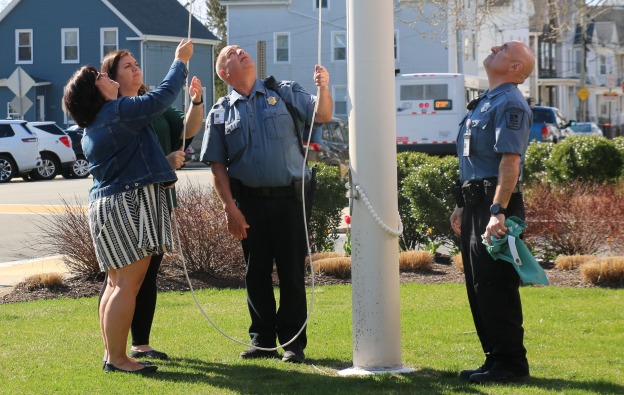St. Luke’s Hospital in New Bedford and Tobey Hospital in Wareham, both a part of Southcoast Health, have earned the U.S. Environmental Protection Agency’s (EPA) ENERGY STAR certification, which signifies that the each building performs in the top 25 percent of similar facilities nationwide for energy efficiency and meets strict energy efficiency performance levels set by the EPA.
“This certification is a testament to the hard work and diligence of the entire Southcoast Health organization,” said Paul Crawford, Vice President of Support Services for Southcoast Health. “It takes a strong commitment from every member of the Southcoast team to reduce energy consumption. Our hospitals provide care every single day, around the clock, so we believe that being a responsible member of our global community is especially important.”
Commercial buildings that earn EPA’s ENERGY STAR certification use an average of 35 percent less energy than typical buildings and also release 35 percent less carbon dioxide into the atmosphere. Southcoast Health improved its energy performance by managing energy strategically across the entire organization and by making cost-effective improvements to its buildings.
“Improving the energy efficiency of our nation’s buildings is critical to protecting our environment, “ said Jean Lupinacci, Chief of the ENERGY STAR Commercial & Industrial Branch. “From the boiler room to the board room, organizations are leading the way by making their buildings more efficient and earning EPA’s ENERGY STAR certification.”
To earn the ENERGY STAR, Southcoast Health worked closely with the Healthier Hospitals Initiative to gather all the necessary data to build the energy profile in ENERGY STAR’s Portfolio Manager. Specifically, Southcoast Health completed several energy initiatives including upgrading interior/exterior lighting with the installation of several motion sensors; building management system upgrades; installing a building analytics system; repairing and replacing electric motors, steam traps, envelopes and insulation; and upgrading boilers.
An improvement that significantly reduced energy consumption was a major upgrade to the building management systems. The systems automated several functions, including reducing energy consumption at night by setting back the air handlers in areas that were unoccupied. Another significant initiative was increasing staff awareness. Facility teams installed stickers on many light switches to remind staff to shut off the lights when they left for the day, and also sent out energy fliers to highlight the importance of reducing energy consumption.
“There isn’t one easy fix when it comes to saving energy in a facility as large as both St. Luke’s and Tobey,” said Christopher LeBlanc, Executive Director of Engineering & Facilities for Southcoast Health. “We made a number of strategic investments that have paid significant dividends in our mission to reduce our level of consumption.”
EPA’s ENERGY STAR energy performance scale helps organizations assess how efficiently their buildings use energy relative to similar buildings nationwide. A building that scores a 75 or higher on EPA’s 1-100 scale may be eligible for ENERGY STAR certification. Commercial buildings that can earn the ENERGY STAR include offices, bank branches, data centers, financial centers, retail stores, courthouses, hospitals, hotels, K-12 schools, medical offices, supermarkets, dormitories, houses of worship, and warehouses.
ENERGY STAR was introduced by EPA in 1992 as a voluntary, market-based partnership to reduce greenhouse gas emissions through energy efficiency. Today, the ENERGY STAR label can be found on more than 65 different kinds of products, 1.4 million new homes, and 20,000 commercial buildings and industrial plants that meet strict energy-efficiency specifications set by the EPA. Over the past twenty years, American families and businesses have saved more than $230 billion on utility bills and prevented more than 1.8 billion metric tons of greenhouse gas emissions with help from ENERGY STAR.
For more information about ENERGY STAR Certification for Commercial Buildings: www.energystar.gov/labeledbuildings.
 New Bedford Guide Your Guide to New Bedford and South Coast, MA
New Bedford Guide Your Guide to New Bedford and South Coast, MA









